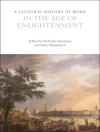How Toronto’s own city farms were crowded out.
First settled in the early nineteenth century, the area now known as Don Mills retained its rural character until the end of the Second World War. After the war, population growth resulted in pressure to develop the area around Toronto and, in a relatively short time, the landscape of Don Mills was irreparably altered.
Today, the farms are all gone, as are almost all of the barns and farmhouses. Fields and forests have been replaced by the industries, homes, and shops of Canada’s “first subdivision.” In
Don Mills: From Forests and Farms to Forces of Change, author Scott Kennedy remembers Don Mills as it was and takes great care to make sure that the farms and farmers are not forgotten.
विषयसूची
Introduction
Background
1. Moatfield Farm
2. Henry Duncan’s Farm
3. Charles Sauriol
4. John Coulson’s Farm
5. The Gray Family Farms
6. The Hogg Family of Don Mills
7. Don-Alda Farms
8. Maryvale Farm
9. Cloughton Grange Farm
10. The Farms of O’Sullivan’s Corners
11. Robert Nash’s Farm
12. Frank Johnston and the Underground Railroad
13. Donlands Farm and the Taylor Family
14. Oriole Lodge Farm
15. The Locke House
16. The Goodwin House
17. The William Armstrong Farm and Wynyates
18. Alexander Milne and Milneford Mills
19. Spruce Grove Farm
20. The Bond Family Farm
21. John Duncan’s Farm
22. The Richard Harris Farm
23. Silas Hill and Sons
24. The Hunter/Mc Donald Farm
25. Spruce Lane Farm
26. The Scrace Family Farms
27. The Hunter Family Farms and Graydon Hall
Acknowledgements
Notes
Bibliography
Image Credits
Index
About the Author
लेखक के बारे में
Scott Kennedy witnessed the farms surrounding his North York childhood home being planted with a new cash crop of buildings. He joined the Toronto Musicians’ Association in 1969, but never lost his passion for history. He traces the evolution of a Toronto neighbourhood in his book Willowdale. Scott lives in a Heritage Conservation District he helped create in Toronto’s Beach neighbourhood.












